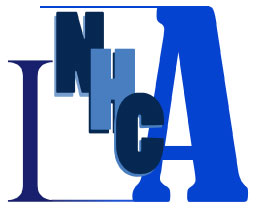International Archives of Nursing and Health Care
The Impact of the United States Pharmacopoeia (USP) Chapter <800> On Nursing Practices
James P Amerine and Lindsey B. Amerine*
UNC Eshelman School of Pharmacy, Pharmacy Intern, University of North Carolina Medical Center, Chapel Hill, USA
*Corresponding author: Lindsey B Amerine, PharmD, MS, BCPS, Assistant Director of Pharmacy, University of North Carolina Medical Center, Assistant Professor of Clinical Education, UNC Eshelman School of Pharmacy, 101 Manning Dr., CB #7600, Chapel Hill, NC 27514, USA, Tel: 984-974-8246, E-mail: lindsey.amerine@unchealth.unc.edu
Int Arch Nurs Health Care, IANHC-2-035, (Volume 2, Issue 1), Short Communication; ISSN: 2469-5823
Received: December 31, 2015 | Accepted: February 16, 2016 | Published: February 21, 2016
Citation: Amerine JP, Amerine LB (2016) The Impact of the United States Pharmacopoeia (USP) Chapter <800> On Nursing Practices. Int Arch Nurs Health Care 2:035. 10.23937/2469-5823/1510035
Copyright: © 2016 Amerine JP, et al. This is an open-access article distributed under the terms of the Creative Commons Attribution License, which permits unrestricted use, distribution,
and reproduction in any medium, provided the original author and source are credited.
Short Communication
Guidelines of handling hazardous drugs (HD) have been in existence since the early 1980s [1]. Subsequent guidelines and recommendations by nursing and pharmacy organizations have further enhanced HD safety in health care settings [2-7]. In early 2016, the United States Pharmacopoeia (USP) Chapter <800> (USP <800>) will be published in its final format providing health care facilities recommendations and requirements for handling HD in an attempt to reduce exposure to health care workers [8]. USP <800> covers the entire medication use process from receipt of the drug through compounding, administration, and monitoring. As such, nursing leaders and staff in all health care facilities, including physician clinics, where HD are administered need to be involved in the implementation of new processes to meet these standards.
For facilities with an integrated pharmacy presence, specific items within USP <800> that pertain to nursing primarily include administration. However, if a clinic does not have pharmacy integrated to compound the HD medications, then all the components of the medication use process (receipt, storage, compounding, dispensing, administration, and disposal) would need to be followed by nursing staff. To focus on the administration aspect, the following specific items need to be evaluated for nursing practice: personal protective equipment, personnel training, closed-system transfer devices, cleaning protocols, and medical surveillance.
Personal protective equipment requires two pairs of chemotherapy gloves and a chemotherapy gown when administering injectable anti-neoplastic medications. In addition, the gloves must be chemotherapy tested and approved and changed at least every 30 minutes, or when gloves are torn or contaminated. Gowns need to be changed and properly disposed of every 2 to 3 hours, with best practice recommending changing gowns after each administration. All personnel handling HD must receive training prior to administering HD. The documentation of this training must be written, filed, and reassessed every 12 months.
Closed-system transfer devices (CSTDs) are a crucial component of HD administration. USP <800> requires CSTDs be used for administration for intravenous and other routes when the dosage form allows. Prior guidelines have suggested the use of CSTDs as a best practice, but USP <800> is the first to require it upon administration. Each facility should evaluate the literature for which devices provide the best evidence to be considered a CSTD.
Nursing staff that handle HD need to be trained on the four (4) components of proper cleaning, including deactivation, decontamination, cleaning, and disinfection. Facilities will need to design their own individual cleaning protocols based on the drugs they routinely administer. USP <800> suggests using a multi-faceted approach to cleaning based on characteristics of different hazardous drugs. To test the effectiveness of the deactivation system, surface wipe testing is recommended.
Medical surveillance is the over-arching program that ensures all safety work practices put into place are effective for reducing exposure of HD to health care workers. Working with the Human Resources and Occupational Health departments will aid in implementing and evaluating these practices.
In conclusion, USP <800> was written to reduce the exposure of HD to health care employees. Administration, personal protective equipment, CSTDs, cleaning, and medical surveillance are the components that will primarily impact nursing practice. These standards need to be implemented within health care facilities where HDs are used by July 1, 2018.
References
-
Society of Hospital Pharmacists of Australia Specialty Practice Committee on Parenteral Services. (1981) Guidelines for safe handling of cytotoxic drugs in pharmacy departments and hospital wards. Hosp Pharm 16: 17-20.
-
Zimmerman PF, Larsen RK, Barkley EW, Gallelli JF (1981) Recommendations for the safe handling of injectable antineoplastic drug products. Am J Hosp Pharm 38: 1693-1695.
-
Connor TH, McDiarmid MA (2006) Preventing Occupational Exposures to Antineoplastic Drugs in Health Care Settings. CA Cancer J Clin 56: 354-365.
-
Oncology Nursing Society Education Committee (1982) Outcome Standards for Cancer Nursing Education. Pittsburgh, PA: Oncology Nursing Society.
-
American Society of Hospital Pharmacists (1985) Am J Hosp Pharm 42:131-137.
-
American Society of Health-System Pharmacists (2006) Am J Health-Syst Pharm 63: 1172-1193
-
Schulmeister L (2014) Safe management of chemotherapy: infusion-related complications. Clin J Oncol Nurs 18: 283-287.
-
Hazardous Drugs-Handling in Healthcare Settings. United States Pharmacopoeia.





